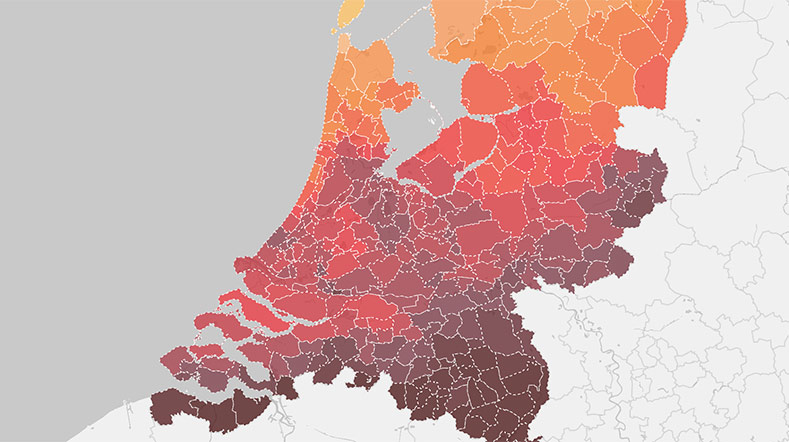
Stronger together for healthy air
A unique collaboration between government, citizens, and knowledge institutions to map regional air quality is taking place in the southeast of the Dutch province of Brabant. With the construction of the Innovative Air Monitoring Network 2.0 (ILM2), with monitoring infrastructure provided by TNO, air quality in the Southeast Brabant region will be measured at around 50 monitoring sites.
With the Innovative Air Monitoring Network 2.0 (ILM2) particulate matter, nitrogen dioxide, and (at some locations) ultrafine particulate matter are measured via sensors. The areas of concern are the urban areas, the area around the airport, and the rural areas with a lot of livestock farming.
Smart combination of data
All of the data is publicly available, for example via Dustmonitoring and Samen Meten [Monitoring Together]. This allows residents to see for themselves the state of air quality in their area. ILM2 was initiated by the consortium to support policies for a healthier society.
Using information from ILM2, TNO is studying in what way combining measurement data and modelling can help optimise air quality monitoring.
In addition, within Eindhoven Engine, together with ‘Zicht op Data’ [Insight into Data], and Fontys University of Applied Sciences, research is being conducted into understanding exposure to particulate matter taking into account how residents move through the city during the day.

‘The regional monitoring network, developed by TNO and partners, is designed to provide a good picture of air quality throughout the Southeast Brabant region.’
The consortium
The ILM2 consortium consists of AiREAS, the Municipality of Eindhoven, the Province of North Brabant, South-East Brabant Municipal Health Service , RIVM, TNO, Utrecht University's IRAS institute (UU-IRAS), and the Southeast Brabant Environment Agency (Omgevingsdienst Zuidoost-Brabant). More information about the project can be found to the Environment Agency's website.
What measures can be taken for healthy air?
It is ultimately up to the municipalities in what areas they take action. But that action must be taken to meet the target is beyond doubt.
The challenges in agricultural areas are different from those in cities, which include polluted air from road traffic, industry or shipping. In short, there may be differences in emphasis, but we all have to deal with them. The air has to be cleaner and for this we need each other: government, industry, knowledge institutions, and citizens.
It has little effect if each municipality goes solo. After all, issues like air quality aren’t bound by municipal boundaries. By working together, we can achieve the best results. At TNO, we’re happy to help you with our approach to healthy air.
Get inspired
Environmental DNA: TNO charts a new course for biodiversity monitoring


Dutch municipalities exceed particulate matter guideline up to 90 days/year


Climate change makes carbon sinks more vulnerable

How CCU can shape the carbon transition

TNO developed Waste treatment Tool for plastics in rivers



